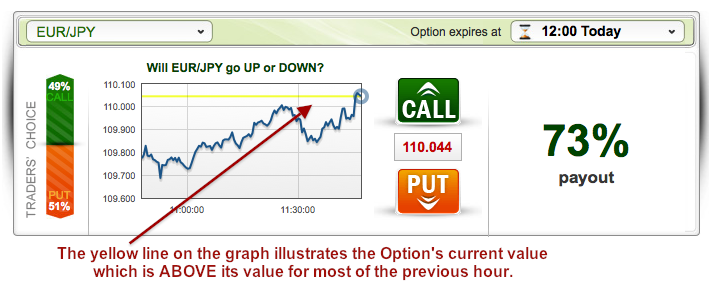Binary Options Trading Tips to Learn and Master – Make More Money
Binary Options Trading Tips – Strategies for Consistent Profits
Binary options offer a straightforward way to speculate on price movements of assets like stocks, currencies, commodities, or indexes. These instruments involve predicting whether an asset’s price will rise above or fall below a specific level by a set expiration time, resulting in either a fixed payout or a complete loss of the investment. With outcomes limited to yes or no, binary options appeal to those seeking defined risk, but success requires discipline and proven methods to achieve steady gains. In this guide, we break down practical tips and strategies, drawing from market analysis techniques, to help you build a reliable approach. We’ll cover step-by-step instructions, examples, and ways to apply these ideas for better decision-making.
Understanding the Basics of Binary Options
Before diving into tips, let’s clarify how binary options function. You select an asset, choose a strike price, and decide on a call (if you predict the price will exceed the strike) or a put (if you expect it to drop below). Expirations can range from minutes to weeks, and correct predictions yield a fixed return, often 70-95% of your stake, while incorrect ones result in losing the full amount invested. Risks are capped per trade, but without structure, trading resembles guesswork. Regulators like the CFTC warn of fraud, especially with unregulated platforms, so focus on licensed exchanges for safety.
This setup demands a methodical process. Think of it as analyzing price charts to spot patterns, much like reviewing historical data to forecast trends. By following structured tips, you can refine your predictions and aim for more winning trades over time.
Tip 1: Master Market Analysis for Informed Predictions
Effective trading starts with thorough market analysis, combining technical and fundamental approaches to identify opportunities. Technical analysis examines charts and indicators like moving averages or the Relative Strength Index (RSI) to predict price directions based on past patterns. For instance, if an asset shows successive higher highs, it signals an uptrend, prompting a call option.
Fundamental analysis, on the other hand, evaluates economic indicators, news events, or earnings reports that influence prices. A positive jobs report might boost currency values, suggesting a timely call.
Step-by-Step Application:
- Select an asset, such as the EUR/USD currency pair.
- Review a 15-minute chart for trends using tools like RSI to check if the asset is overbought (above 70) or oversold (below 30).
- Cross-reference with news: If a central bank announces rate hikes, expect upward pressure.
- Place a trade only when both analyses align.
Example: Suppose gold is trending upward on a daily chart with RSI below 30, indicating oversold conditions. A fundamental event like inflation data supports further gains. Buy a call option expiring in one hour if the price is near support levels. This method has helped traders capitalize on trends, potentially leading to consistent returns when applied repeatedly.
Tip 2: Implement Strong Risk Management Rules
Risk management protects your capital by limiting exposure on each trade. Since binary options are all-or-nothing, never risk more than 2-5% of your account per position to withstand losing streaks. This includes setting stop-loss equivalents and defining risk-reward ratios.
Step-by-Step Application:
- Calculate your account balance, say $1,000.
- Limit trades to 2% ($20) maximum.
- Assess the trade’s probability: For high-confidence setups, proceed; otherwise, skip.
- Use hedging by placing opposite trades on the same asset to offset potential losses.
Example: With a $5,000 account, you spot a volatility spike in Bitcoin after a news release. Instead of betting the full amount, risk $100 on a one-touch option predicting the price hits a boundary level. If wrong, the loss is contained; if correct, the payout covers multiples of the stake. Strategies like risk reversal, buying a call and selling a put, balance outcomes and reduce overall risk.
Common pitfalls to avoid include overtrading after wins or ignoring limits, which can deplete funds quickly. Stick to these rules for steady progress.
Tip 3: Follow Proven Strategies Like Trend-Following
Adopt strategies suited to market conditions for repeatable results. Trend-following involves betting with the market’s direction, using moving averages to confirm momentum. In strong uptrends, place calls; in downtrends, puts.
Step-by-Step Application:
- Identify the trend on a chart: Look for higher highs and lows for uptrends.
- Apply indicators like MACD to spot convergence or divergence signaling shifts.
- Choose short expirations (e.g., 60 seconds) for quick moves or longer ones for sustained trends.
- Execute the trade and review outcomes.
Example: For the S&P 500 index trading at 2756.75, if futures break resistance toward 2770, buy a call binary on the US 500 contract expiring at day’s end. This directional bet aligns with the trend, increasing win probability. For sideways markets, switch to range trading, predicting prices stay within support and resistance levels.
Other options include news trading, executing immediately after economic releases, or volatility strategies for big moves without directional bias. Test these in demo accounts first to refine without real losses.
Tip 4: Practice Money Management and Continuous Review
Money management allocates funds wisely, deciding trade sizes relative to your balance to preserve capital. Pair this with an analysis diary to track trades and improve.
Step-by-Step Application:
- Set a daily loss limit, like 5% of your balance.
- Log each trade: Note asset, indicators, time, and result.
- Review weekly: Adjust parameters if patterns show weaknesses, such as poor performance in volatile sessions.
- Backtest strategies on historical data before live use.
Example: After 20 trades, your diary reveals 70% wins with RSI strategy but losses cluster around news events. Shift to avoid trading during releases, boosting consistency. This review process adapts your approach to changing markets, fostering long-term gains.
Tip 5: Choose a Regulated Broker and Use Demo Accounts
Select brokers regulated by bodies like the CFTC or ASIC for fair terms and secure funds. Avoid unregulated platforms promising easy riches, as they often involve fraud. Start with demo accounts to practice strategies risk-free.
Step-by-Step Application:
- Research brokers offering diverse assets and low fees.
- Open a demo to simulate trades.
- Transition to live trading with small amounts once proficient.
- Monitor for tools like real-time charts.
Example: On a platform like Nadex, practice trend-following on forex pairs with $10,000 virtual funds. Build confidence before real investments.
Building Consistency for Long-Term Success
Applying these tips—analyzing markets, managing risks, using strategies, reviewing performance, and selecting reliable brokers—creates a foundation for consistent profits in binary options. Remember, no method guarantees wins, but discipline turns random bets into calculated decisions. Begin with small steps, practice regularly, and adjust based on results. Over time, this structured approach can lead to more predictable outcomes in your trading efforts.






